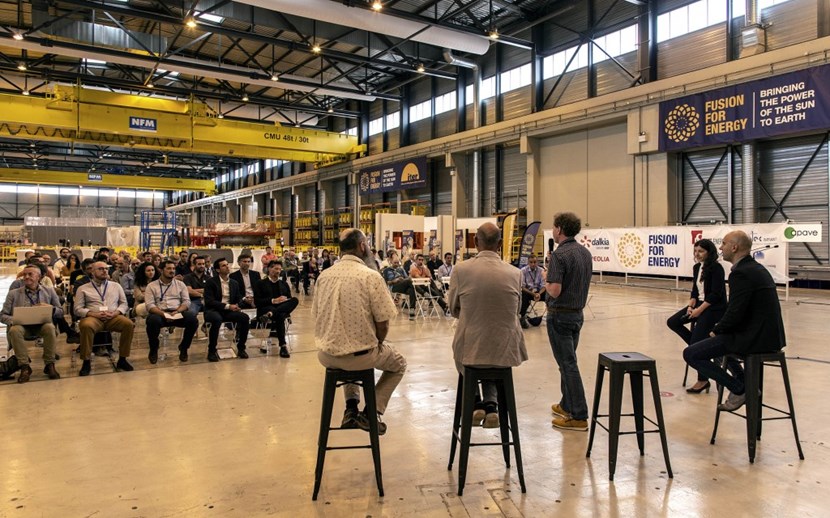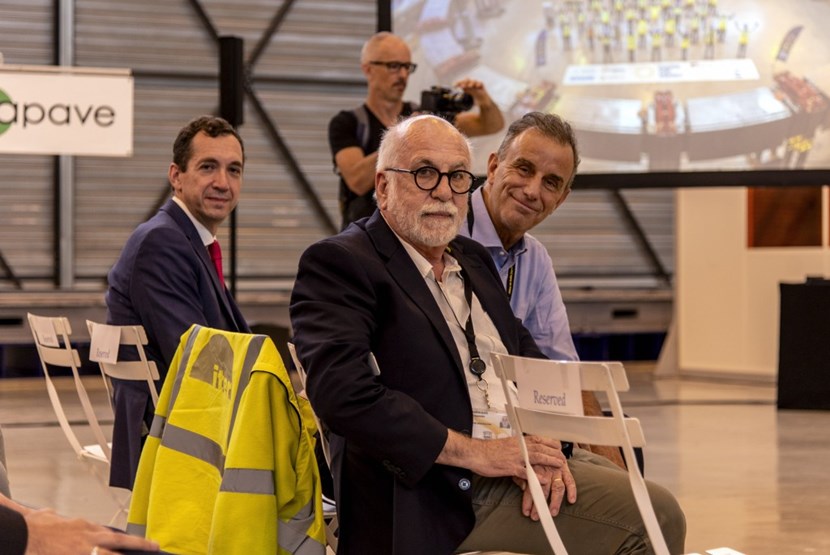ITER NEWSLINE
-
Poloidal field coils
Reflecting on a unique industrial achievement
Poloidal field coils | Reflecting on a unique industrial achievement
They had worked together for 10 years. And on Thursday 20 June, they gathered one last time to reflect on what they had accomplished.

They had worked together for 10 years. And on Thursday 20 June, they gathered one last time to reflect on what they had accomplished: the successful manufacturing and testing, under Europe's supervision, of the four largest ring-shaped superconducting magnets ever designed.
Director-General Pietro Barabaschi, who joined ITER in the early 1990s when the project was entering the Engineering Design Activities (EDA) phase, remembered when the machine's poloidal field coils were "just drawings." Alessandro Bonito Oliva, who before becoming head of the Tokamak Program at ITER managed the magnets program of the European Domestic Agency for more than 15 years, recalled the time when, in the entire fusion ecosystem, "no more than 20 people had experience in the manufacturing of large superconducting magnets." Pierre Gavouyere-Lasserre, Europe's Deputy Project Manager for poloidal field coils, reflected on the (relative) emptiness of the vast facility today "much like it was in 2014, when it all started." And Marc Lachaise, who was appointed Director of the European Domestic Agency in February 2023, praised the hundreds of workers whose "resilience and creativity" had made this unique industrial achievement possible: the successful manufacturing and testing, under Europe's supervision, of the four largest ring-shaped superconducting magnets ever designed, ranging from 17 to 24 metres in diameter and weighing between 200 and almost 400 tonnes.
Manufacturing requires a factory and a team—and for the ITER poloidal field coils, "both were built from scratch," said Enrico Vizio, Europe's Magnets Program Manager. In late 2015, the vast poloidal field coil winding facility was ready to receive its first bespoke equipment. As weeks and months passed, more tooling was added, whose functions seemed quite inscrutable for the non-specialists: sturdy tower-like devices, what looked like giant tape dispensers, walkways, gantries, steel cylinders and electrical cubicles. Meanwhile a composite workforce of men and women from a dozen European suppliers was assembled. Coming from different countries and backgrounds, they soon formed "a team" in the strongest sense of the term. Director-General Barabaschi insisted on the importance, in the success of this exceptional venture, of "all those who worked with their hands."

From left to right: Marc Lachaise, Director of the European Domestic Agency Fusion for Energy; Alessandro Bonito Oliva, who before becoming head of the Tokamak Program at ITER managed the European magnets program for more than 15 years; and ITER Director-General Pietro Barabaschi.
In less than ten years, four massive, complex and delicate first-of-kind components came off the production line: two that measured 17 metres in diameter (PF5 in April 2021 and PF2 in December 2021) and two that measured 24 metres in diameter (PF4 in August 2023 and PF3 in April 2024). PF5, "almost a prototype", had required three and half years of work. Although 40% larger and wound with 22% more superconducting cable, PF3 was finalized in two years and 9 months—a 15-month gain in fabrication time.
There is, however, an achievement that is just as important as the fabrication of the four ITER ring-shaped coils. Hundreds of specialists, working in the winding facility since 2015, have created a wealth of technical and organizational skills that will benefit the "next-step machine" and the nascent fusion industry.
return to the latest published articles



